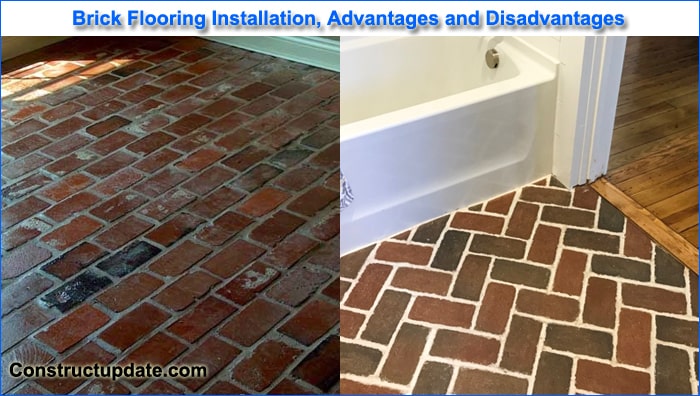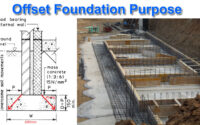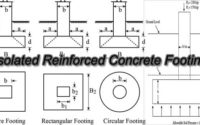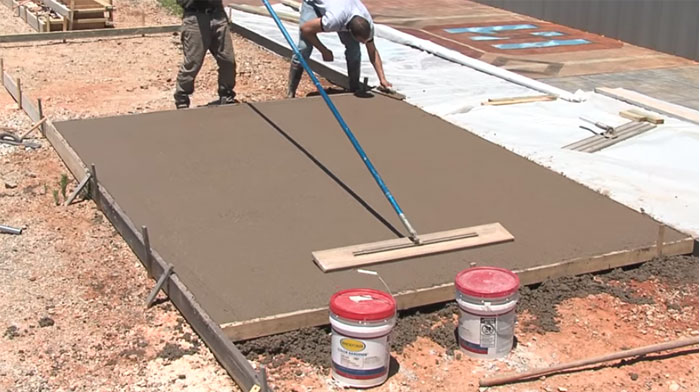Brick Flooring – Installation, Advantages, Disadvantages
Brick was initially created as an alternative to natural stone, making it one of the oldest and most used building materials in the world. Brick flooring is a traditional flooring style. Brick is traditionally created from earthen clays, formed into rectangular blocks, dried, or fired, and used to build walls or pave surfaces. The bricks used as flooring are referred to as clay pavers, and the kind used indoors is made up of a variety of clays, including kaolin (China clay), which gives it a finer, denser texture and provides for a more appealing floor. Shale and iron are also added to the mix of brick flooring pavers to make them tougher.
Advantages of Brick Flooring
1. Long Lasting and Durable
Brick floor coverings are incredibly long-lasting and sturdy. They exhibit excellent resistance to deterioration and fire, saving you the expense of yearly replacements and ongoing maintenance.
In other instances, the brick floor has actually worked to lessen the damage of a fire because it cannot easily spread quickly from one area to another.
2. Softer battered Look
Brick flooring’s attraction actually grows over time, giving it a softer battered appearance and adding feathers to its raw appeal. Although everyone has different aesthetic preferences when it comes to appearance, the worn style is undoubtedly a cheap yet efficient approach to give the area a rustic, natural feel.
3. Low Cost (pocket friendly)
Brick floors are available as pavers, therefore their thickness when used as a floor covering is different from their thickness when used in masonry buildings. As a result, the cost is reasonable for the user. In fact, the price can be decreased even more based on the type of material utilized, namely the class and native substance of the brick.
4. Maintenance
Brick flooring shares many of the same benefits as ceramic and stone tiles. Brick is a very resilient material that is resistant to wear and tear from a busy home, pets, heavy traffic, or frequently moved furniture. Brick’s rough surface makes it simple to clean—just sweep or hoover it briefly.
Brick floors are extremely prone to stains unless they are properly treated since brick is formed of clay and is grouted with cementitious mortar. A sealer should typically be applied as soon as the flooring is completed, and it needs to be renewed on occasion for the duration of the floor’s life to preserve protection.
For brick flooring, there are often two different types of sealers. Deep-penetrating sealants penetrate the brick while largely preserving its natural color and surface texture. In order to create a smoother, shinier surface that darkens the color of the brick, film-forming sealers (such as acrylic or polyurethane) coat the top of the brick.
5. Design
Brick flooring looks best in rustic home designs like cottages or farmhouses and in spaces where a casual appearance is preferred, like sun porches or entryways. Brick is traditionally a suitable choice for flooring beneath or next to wood stoves and fireplaces since it is non-combustible.
Brick is a difficult design element to top. It simultaneously offers visual warmth, texture, color, and eye-catching pattern.
6. Temperature Remains Warm
We are aware that stone floors can become quite difficult for them to walk on during the winter.
Contrarily, this is not the case with brick flooring, which has a tendency to stay warm during the cooler months. One could say that the temperature is rather consistent and mild. The outcomes are wonderful when combined with radiant floor heating.
7. Used both inside and externally
Bricks also have a lovely quality that, unlike other materials, fading is typically not a problem. Bricks can therefore be utilized both inside and outside, or in this case, even semi-outside.
8. Variety of Options Availability
There is a wide range of design alternatives accessible when using bricks. Brick color and size can be changed, as well as the way they are arranged for flooring. The patterns that are available for flooring are also many and diverse. Each design can be as distinct as the next, and no two brick floors are the same unless they have been painted on purpose.

Disadvantages of Brick Flooring:
1. Too distinct
Even while brick flooring has a very strong personality and can be really beautiful, not everyone likes it. This flooring is not advised if you are buying a home to resell or if you intend to sell your current residence at some point in the future.
2. Costly to replace
If you decide you don’t like your brick flooring, replacing it could be expensive and difficult because the brick pavers will need to be broken and crushed out of the subfloor. Porcelain tile might be used to merely cover the brick, but it isn’t always an option based on your home or the project’s requirements.
3. Not always easy to get a 100% good, level finish
Although brick pavers should be simple to install, unless the subfloor is extremely flat, brick can highlight surface irregularities. Make sure your subfloor is spotless before laying brick pavers to reduce this risk.
4. Heavy
Your substructure might not be suitable for brick pavers, especially on upper floor levels, as they are significantly heavier than ceramic tile.
5. Hard underfoot
Brick is a highly firm surface that some people find uncomfortable walking on. If you’re not wearing shoes, you can also find the texture bothersome.
6. Very porous
If brick flooring is not properly sealed, it may discolor and may develop mold and mildew. To maintain a brick floor looking its best, you should also consider applying sealant again every three to five years.
7. Toxic adhesives
There have been worries that certain brick flooring adhesives may leak toxic substances. But you may now choose wisely because there are so many more eco-friendly glues, mortars, and grouts on the market.
Brick Flooring Installation
As was previously said, brick pavers are typically chosen these days for interior use, and their installation is comparable to that of ceramic tiles.
The most crucial thing to remember is that, due to the size of brick pavers, it is essential to begin with a subfloor surface that is as level and as flat as possible. This will lessen the likelihood of your brick floor becoming uneven and bumpy.
Use bonding mortar or adhesive (depending on the manufacturer) to adhere the brick paver to the flooring after choosing a layout plan.
Prior to grouting in between the pavers, the pavers must first be sealed and given time to fully cure. Following the curing of the grout, a second coat of sealer is advised.
Depending on the size of the room you’re paving, the entire procedure can take up to three days to finish.
While installing brick pavers is a DIY project that is doable, if you don’t believe your skills are up to the task, a professional can be hired for about $6 to $8 per square foot (not including the cost of the pavers).
Brick Flooring vs. Terra Cotta Tile Flooring
Terra cotta tile is another product made of clay that is frequently used for flooring. Compared to the coarser clays used to make brick pavers, the texture of terra cotta tiles, which are often larger tiles, is different. Terra cotta’s reddish color is a result of the high iron concentration of the clay used to make it. Terra cotta tiles can be either glazed or unglazed; when unglazed tiles are used, they need to be sealed similarly to how brick pavers are sealed.
Brick pavers have a rougher texture than terra cotta tiles, and because of the bigger tile size, there are fewer joints to grout and maintain. Brick looks less attractive than terra cotta, which is better suited for use throughout the entire house. Additionally, because terra cotta is lighter than brick pavers, it can be utilized where brick pavers would be too heavy for the floor to support.
Should I consider Brick Flooring for my Home/Business Properties?
In situations where you need a durable floor that has a striking, rustic appearance, brick flooring can be an excellent option. It is perfect for relaxed spaces like sunrooms, mudrooms, or laundry rooms. Over a concrete slab or a subfloor made of wood that has been structurally reinforced, brick flooring works best. After installation, be prepared to seal the floor, and consider renewing the seal coat every few years.





